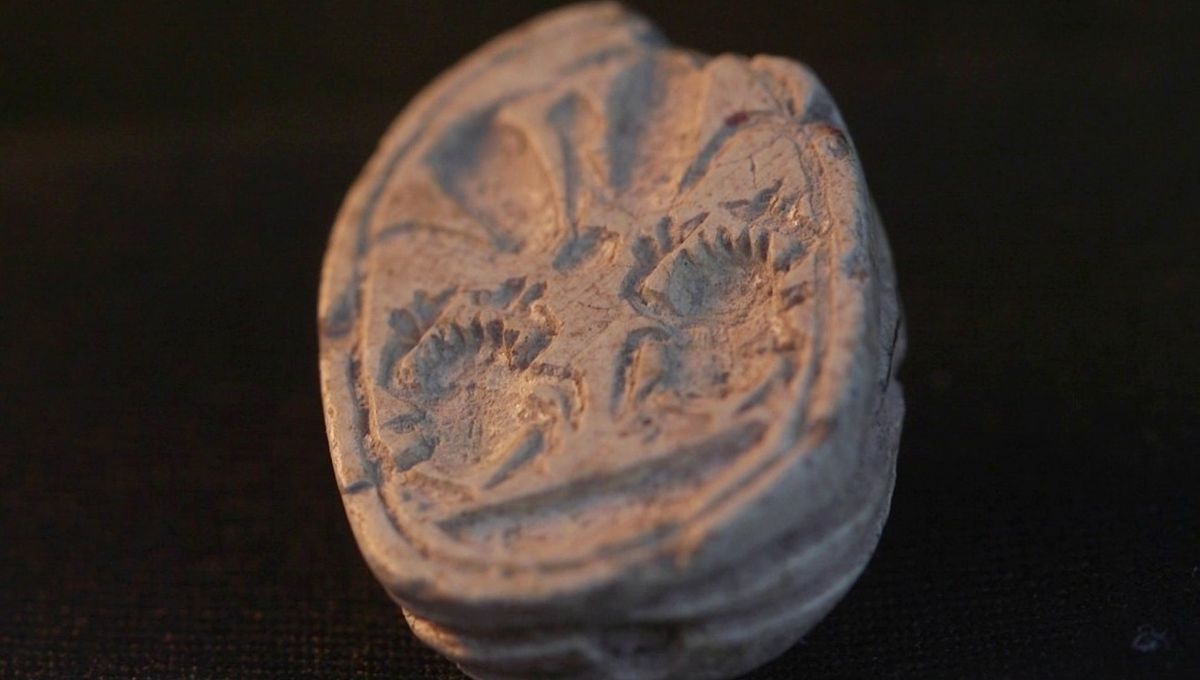
Imagine walking along a simple country path with your kids only for one of them to rummage around in some stones and return with an ancient amulet. This unlikely experience, which sounds like the setup to a movie, actually happened to a family during a trip to Tel Azekah, near Beit Shemesh, Israel.
“We were walking along the path, and then Ziv bent down – and out of all the stones around her, she picked up this particular stone,” Omer Nitzan, Ziv’s sister, explained in a statement from the Israel Antiquities Authority.
“When she rubbed it and removed the sand from it, we saw something was different about it. I called my parents to come see the beautiful stone, and we realized we had discovered an archaeological find! We immediately reported this to the Israel Antiquities Authority.”
It turned out the stone that 3.5-year-old Ziv had found was actually a 3,800-year-old Canaanite scarab seal from the Middle Bronze Age. These seals were ornate objects that originated in ancient Egypt, where the dung beetle had symbolic and sacred meaning. Due to their ability to roll balls of dung that became a place to lay their eggs and then a source of food for their young, these beetles became symbols of rebirth, the cycle of life, and the motion of the Sun in the sky. In fact, their name in Egyptian derives from the verb “to come into being” or “to be created”.
Given this powerful set of meanings, scarabs were a popular image found on amulets, seals, and other forms of jewelry, especially during the time when Ziv’s seal was created.
“Scarabs were used in this period as seals and as amulets. They were found in graves, in public buildings and in private homes. Sometimes they bear symbols and messages, that reflect religious beliefs or status,” Dr Daphna Ben-Tor, an expert in ancient amulets and seals, noted.
This particular specimen was discovered at the foot of Tel Azekah, a significant archaeological tel – a mound or small hill built up over several centuries of occupation – near Beit Shemesh. In this tel, archaeologists have found evidence of many changing cultures from across history, including finds dating to the Kingdom of Judah, including city walls, agriculture installations, and more. Tel Azekah was also known as a key feature in the biblical conflict between David and Goliath (Samuel I 17:1).
“We have been excavating here for almost 15 years, and the excavation findings show that during the Middle Bronze and Late Bronze Ages, here in Tel Azekah, thrived one of the most important cities in the Judean Lowlands,” Professor Oded Lipschits, director of the Tel Aviv University archaeological dig, explained.
Lipschits actually went to meet Ziv and her family at the tel where the scarab was found.
“The scarab found by Ziv joins a long list of Egyptian and Canaanite finds discovered here, which attest to the close ties and cultural influences between Canaan and Egypt during that period.”
According to Israeli Minister of Heritage, Amichai Eliyahu, “The seal that little Ziv found during a family trip to Tel Azekah connects us to a grand story, that of the ancient civilizations that lived in this land thousands of years ago. The scarab Ziv found also reminds us that in the Land of Israel, even children can be a part of discovering history.”
Ziv has since been awarded a certificate of appreciation for good citizenship for handing over the find, which will now be included in a special display for Passover at the Jay and Jeanie Schottenstein National Campus for the Archaeology of Israel.
Source Link: 3-Year-Old Finds 3,800-Year-Old Canaanite Scarab Amulet During Family Trip In Israel